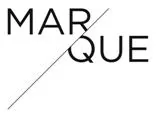Ricky Gervais has agreed to pay compensation to famous Aboriginal artist, Warlimpirrnga Tjapaltjarri, for using an unauthorised reproduction of his work entitled 'Tingarri Dreaming' in his TV series 'After Life'. Finally, cultural misappropriation has had a consequence.
It goes like this: fans of the hit Netflix show noticed that the lounge room set of Ricky Gervais' character featured a large Aboriginal dot painting on the living room wall, and were eager to identify the artist. An investigation by the Copyright Agency, established that the painting was in fact a cheap knock-off of the 1987 work Tingarri Dreaming by an English artist.
The Copyright Agency approached the production company about the rip off and an undisclosed fee was paid for use of the reproduction in the first series. The upcoming second season of After Life will feature an authorised print of Tingarri Dreaming and a licence has been agreed for that use. The original painting is part of the National Gallery of Victoria's collection.
This compensation is a win for Tjapaltjarri, however use of fake indigenous art is an ongoing problem. We've previously written about what legal protection can be afforded to prevent cheap knock-offs of indigenous art, however, it's a complex issue.
Recently, the Indigenous Art Code has said it would write to Netflix to propose formal protocols for handling Indigenous content. In August, the Australian Government through IP Australia published the 'Protection of Indigenous knowledge in the intellectual property system: Consultation Report.'
The Consultation Report looked at ways to help promote the cultural integrity and economic potential of Indigenous Knowledge (IK), which includes:
- Traditional Knowledge (TK) – know-how, practices, techniques and skills; and
- Traditional Cultural Expressions (TCEs) – visual imagery, performance, design, words
- and names.
The key themes were that Indigenous people want to be able to be recognised as the owners of Indigenous knowledge and have the ability to control and protect its use.
Pressure is now on the Federal Government, as well as the States and Territories, to commit to action combatting the sale of fake artworks, to maintain the integrity of genuine Indigenous art.
Clearly, this requires a more imaginative approach than reliance on standard IP protections. One option is special legislation providing for Indigenous community control over its cultural items and resources. Similar laws have already been introduced in India and we think it's worth serious consideration here, if Indigenous art is to stand a fighting chance of maintaining its integrity into the future.
We do not disclaim anything about this article. We're quite proud of it really.


